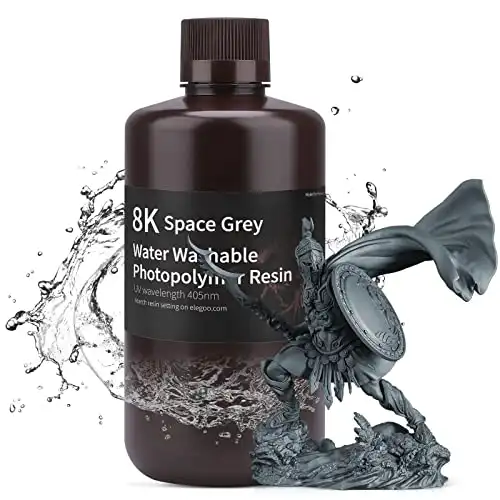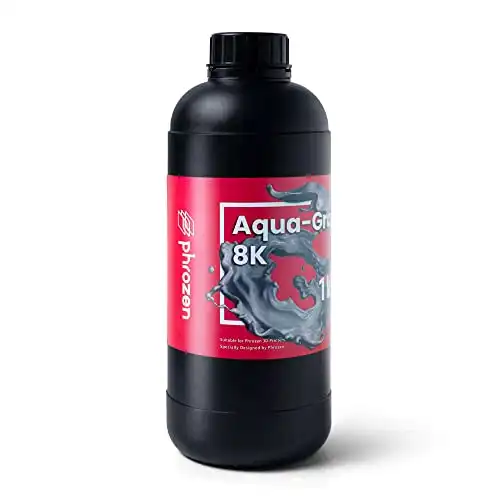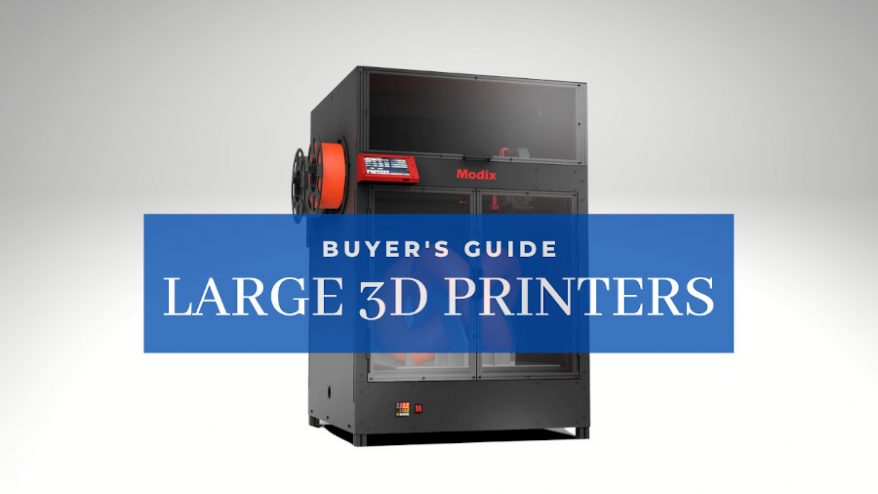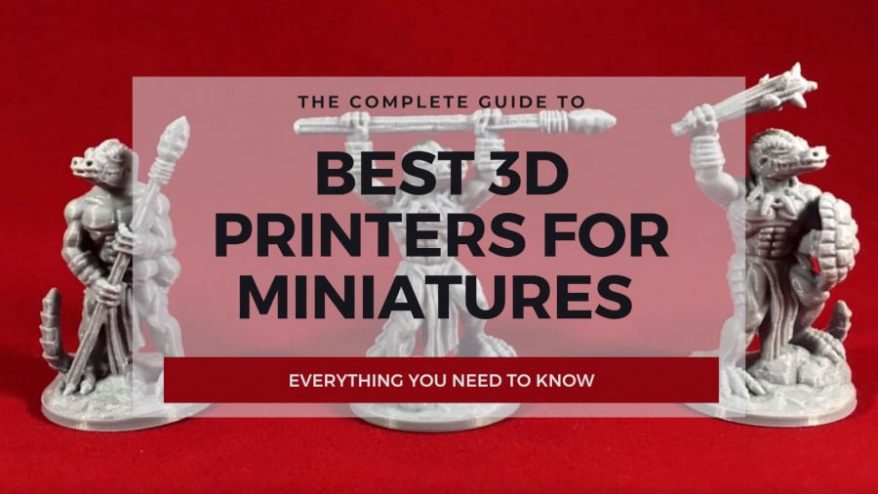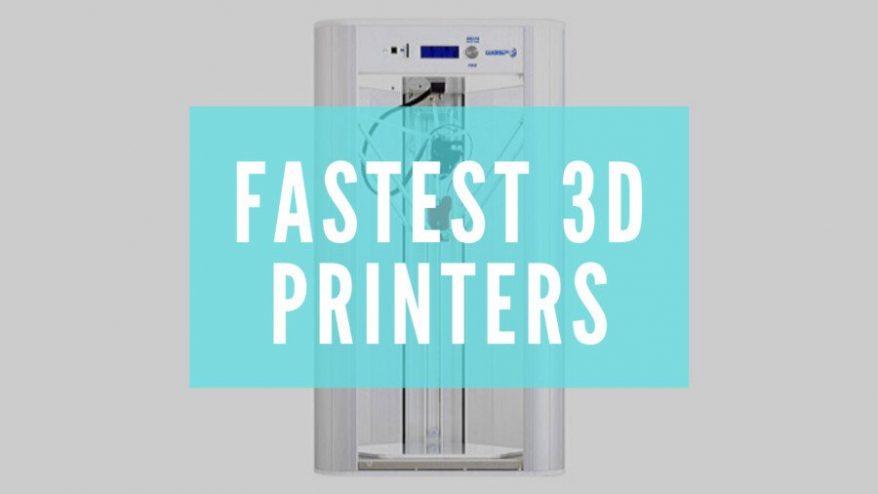Miniatures need to be rich with fine detail and character, and resilient and durable enough to weather the wear and tear of tabletop sessions.
So, do you go for a flexible resin to prevent limbs and weapons snapping off when those inevitable knocks and drops come to pass?
What about 8K resin, which promises the best quality out there? Is it worth the extra money, or are you better sticking with more affordable standard resin?
Here’s our top recommendations for the best resins to use for 3D printing miniatures:
|
|
|
|
|
4.1
|
4.7
|
4.5
|
|
$29.99
|
$44.19
|
$45.99
|
|
1kg
|
1kg
|
1kg, 5kg
|
|
Space grey, beige, black, clear green, clear red, grey, mint green, smoky black, white
|
Grey, Vanilla, Snow Grey, Red Clay
|
Clear, Obsidian Black
|
|
|
|
It’s also key to consider what you plan to use your minis for! Are you planning to simply display your minis on a shelf to wow friends and visitors? Or, are they bound for the table and destined for heavy circulation at your weekly gaming sessions?
In this guide, we’ll walk you through a selection of the best resins for miniature printing. At this point, it’s worth noting that personal preference plays a big role here, and we do recommend testing out different resins if your budget allows. Doing so will give you a sense of the qualities of each and help you find that perfect match for your resin minis projects.
Quick Overview
- Phrozen Aqua 8K Resin: Top Pick Overall
- Elegoo Water Washable Rapid Resin: Best Budget Pick
- Siraya Tech Tenacious Flexible Resin: Top Premium Pick
- Siraya Tech Fast ABS-Like Resin
The Best Resins for Miniatures
1. Phrozen Aqua 8K Resin – Best 8K Resin for Miniatures
- Price: Check latest price on Amazon
- Bottle Size: 1 kg
- Colors: Grey, Vanilla, Snow Grey, Red Clay
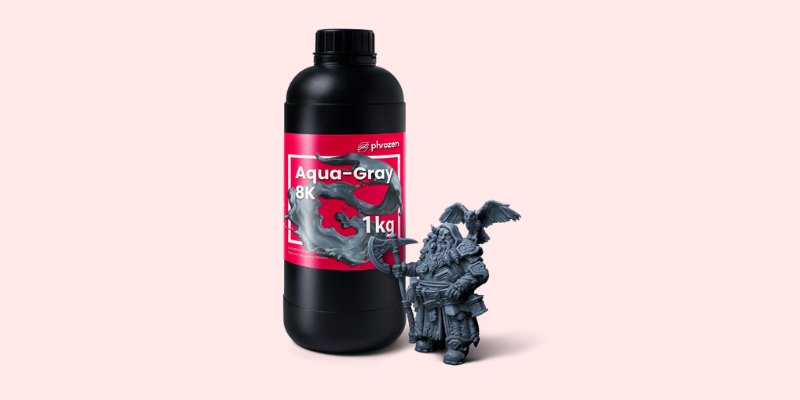
Though you’ll need an 8K resin printer to tap into the full potential of Phrozen Aqua 8K Resin, the results speak for themselves. You can clearly see the quality differences vs standard resins, with better details, sharp features, and a tangible crispness to the print and surface finish. We’re looking at the most detailed and best-quality resin on the market today.
Phrozen Aqua 8K Resin achieves this partly due to the technology improvements of new 8K printers, but the resin’s formulation ensures superb dimensional accuracy and low shrinkage. The results are nothing short of excellent, especially with small miniatures that some lower-resolution resin printers sometimes fail to do justice.
That said, this is a resin for the most demanding maker, and if you don’t have a keen eye for detail, then it’s likely overkill, and standard resin may serve you just as well.

We also like Phrozen Aqua 8K Resin for its low viscosity. It’s a thick resin, similar to batter in many ways, which helps mitigate flow, an essential factor that makes pouring and removing it easier, Additionally, it’s much kinder to the FEP film on printers as the resin doesn’t stick quite as much as standard resin.
Further benefits of this viscosity is easier print removal, and supports snap off with little effort prior to curing. The supports bear a flexible quality, reducing the likelihood of the stiff supports you get with typical resin from piercing gloves, causing all kinds of trouble.
It’s also worth noting that Phrozen’s 8K resin has a low-odor formulation, which helps given the longer print times needed to produce 8K-quality prints.
Priced at $50, Phrozen Aqua 8K Resin is among the more expensive 8K resins available. There are several color options, an improvement over the one-color offering of other 8K manufacturers.
2. Elegoo Water Washable Rapid Resin – Best Cheap Water Washable Resin for Miniatures
- Price: Check latest price at Elegoo here / Amazon here
- Bottle Size: 500 g, 1 kg
- Colors: White, Grey, Beige, Yellow, Green, Clear Blue, Red, Mint Green, Smoky Black, Black
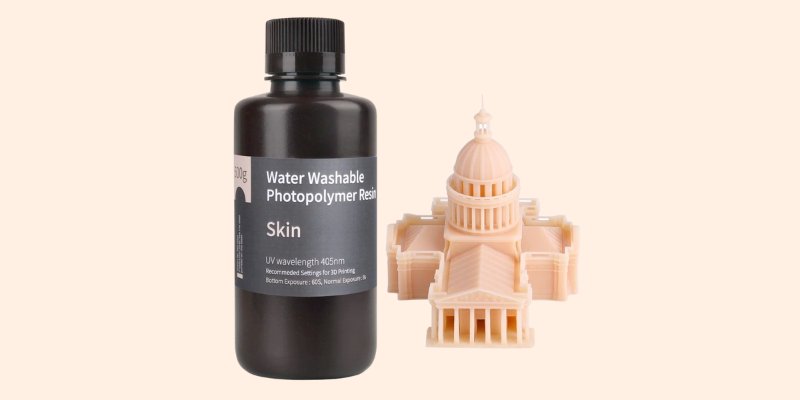
For all the quality and detail offered by resin printers, producing them is a messy business, and any steps to reduce exposure to strong chemicals helps. Here, we have one such solution – Elegoo Water Washable Rapid Resin.
As the name suggests, this resin is water-washable, allowing makers to clear prints fresh off the resin print bed using typical water rather than harsh isopropyl alcohol. Elegoo manages to offer this while keeping to the affordable prices we’ve come to expect from the company.

Elegoo’s water-washable resin also scores points because it doesn’t emit the same strong smell as standard resin, which is great if you’re running a printer constantly throughout the day, or working in a confined space.
This also extends to the quality of the prints, which match those of any standard resin on the market.
However, where water-washable resin falters is the overall durability of the prints. The cured resin is more brittle and prone to snapping and breaking, which makes for slightly less reliable miniatures, especially those used regularly.
But, if you’re printing miniatures for display, then Elegoo Water Washable Rapid Resin’s easy cleaning benefits and high-quality details make it a strong choice.
3. Siraya Tech Tenacious Flexible Resin – Best Flexible Resin for Miniatures
- Price: Check latest price at Amazon here
- Bottle Size: 1 kg, 5 kg
- Colors: Clear, Obsidian Black
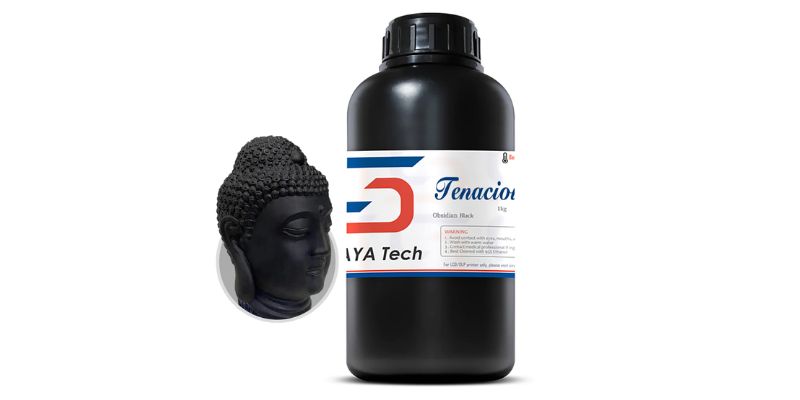
Siraya Tech Tenacious is a flexible resin, designed to be more forgiving when bent, twisted, or compressed than typical resins – and regains its original shape rather than breaking as it would with brittle normal resin.
This quality makes it particularly suited to miniatures bound for heavy use on the tabletop. A mini made with Tenacious resin can withstand a drop and even the clumsy hands of more passionate players.
Alongside flexibility, Siraya Tech Tenacious is also formulated to offer better strength than standard resin. A popular use of Tenacious is mixing it with standard resin to give it extra durability – this is just about the best mix for miniatures.
Siraya Tech’s asking price is markedly higher than more budget-oriented standard resins, but the extra spend is well worth it for the peace of mind of tough, flexible minis that won’t break at the first sight of strain. Furthermore, it’s more affordable than pricier specialist flexible resins, so it bridges the gap between a hobbyist budget and a high-quality resin.
It comes in only two colors, so not the best option for those not planning to prime and paint their minis.
4. Siraya Tech Fast ABS-Like Resin – Best Resin for Durable Miniatures
- Price: Check latest price on Amazon here
- Bottle Size: 1 kg, 5 kg
- Colors: Grey, Navy Grey, Creamy, White, Smoky Black, Green, Mecha White
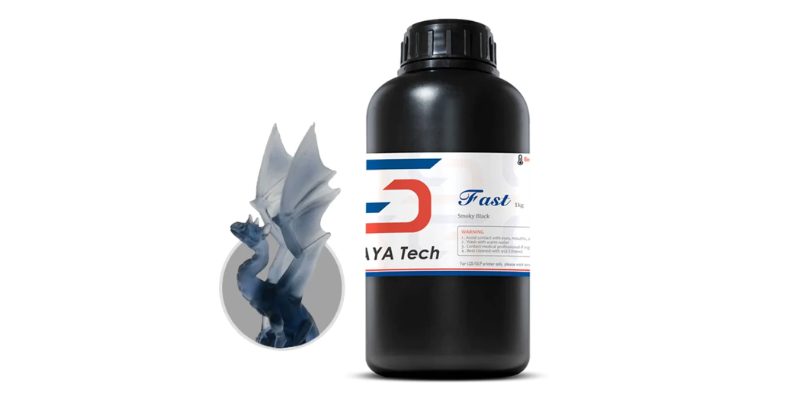
Siraya Tech Fast ABS-Like Resin is a tough (or ABS-like resin) that prioritizes durability. Though not specifically designed for minis, the resin performs more than admirably when boosting models’ shelf-life.
Though not 100% immune to accidental drops and bumps, the likelihood of its remaining intact and structural sound is vastly higher than miniatures made with standard brittle resin.
It does this without sacrificing detail or visual quality with nothing short of excellent results (print settings willing), especially when rendering more intricate and complex features. When primed and painted, the depth and richness of Siraya Tech Fast ABS-Like Resin’s textures come to the fore.
It also comes in a decent range of colors, making it suitable for non-painted miniatures if painting isn’t part of your plans.
Though not directly linked to miniature making, we’re also fond of Siraya Tech for cutting down on the pungent smells we usually expect from resin. This makes for a slightly more pleasant printing experience, especially when working in tight areas.
Though the naming includes ‘Fast’, a reference to curing speed, the benefits aren’t much to write home about, so it’s best not to lean on Siraya Tech Fast ABS-Like Resin if you’re looking for substantially quicker cure times.
What Type of Resin Is Best for Miniatures?
Pinting miniatures requires both quality and durability, and the best resin for printing miniatures falls into one of these categories, or ideally both.
Standard Resin
Among the most prized resins for miniatures we have standard resin. This is your affordable, general-purpose resin designed to render parts with excellent levels of detail, but it tends to be brittle and prone to breaking under stress.
Flexible Resin
Tabletop enthusiasts and miniature makers also often turn to what are called flexible resins. As the name implies, these resins have a chemical formulation that gives cured parts a degree of flexibility.
This means they can bend, flex, and stretch much further than standard resin before breaking. The benefits are clear for miniatures – if you accidentally drop a mini onto the floor, flexible resin is far less likely to break or snap.
Tough, ABS-Like Resin
In an attempt to match the toughness of FDM ABS filament, tough resins are designed to take a knock and still live to fight on the tabletop another day.
Alongside toughness, these resins also elect to weave in excellent stiffness, resistance to impact, and a degree of flexibility (though not quite on par with flexible resins) in their chemical formulations.
8K Resin
The most recent addition to the resin type lineup, 8K resin is designed to tap into the high-detail capabilities of 8K 3D printers and produce high-quality resin miniatures.
Though results vary depending on factors like the quality of the STL file and print settings, the general result is a noticeable and visual improvement in the overall quality of minis, especially fine details, smoothness, and surface finish.
Like standard resin, 8K resin remains relatively brittle, so it’s better suited to ornamental minis than the rough-and-tumble of the tabletop.
General Tips and Tricks for 3D Printing Resin Miniatures
Choosing the Right Printer
There’s no right or wrong printer for printing miniatures. By their capacity to render details at far higher details than FDM printers, all resin printers theoretically have the capacity to create good quality miniatures. If you want better detail, look to get a 4K or even 8K resin printer, and we have written further about the best 3D printers for miniatures.
Protective Equipment
Resin is nasty stuff that can harm humans and the environment. It’s vital to take the necessary precautions while handling resin and dispose of it correctly.
Wear nitrile gloves (and ideally protective eyewear) at all times, clean up any spillages, and make sure to cure all and any resin, including residue on paper towels, gloves, and the like before disposing of it, even so-called plant-based and water washable resin.
Here’s a quick list of what you’ll need:
- A well-ventilated and organized workspace
- Paper towels, and lots of them
- Nitrile gloves
- Protective eyewear
- Isopropyl alcohol
- Scraper for removing prints from the build plate
- Tubs for washing prints (or a wash and cure station)
- Mats or trays to keep resin contained when cutting off supports or otherwise handling uncured prints
- A funnel and metal filter for pouring unused resin back into the bottle
Miniature STL Models
Though with some work, most STL files can lead to good quality miniatures, we highly recommend that beginners start with pre-prepared models where the designer has already set up supports, drain holes, hollowing, and orientation. This makes your first few minis easier to create, setting you up for success moving forward. We have also written about some cool resin models with STL files you can download.
Print Slow
Resin printers are already slower than FDM printers (except if you’re printing in batches), but miniatures benefit greatly from slower print speeds, especially if you’re using an 8K printer and 8K resin. It’s important to accept that getting the best miniatures with a resin 3D printer takes time, and a little patience can yield superb results.
Experiment With Slicer Settings
Once you’ve found a resin slicer you’re comfortable using (Lychee, Chitubox are both great options), look to experiment with settings, especially if you’re struggling with print failures. Exposure times, lift speed, anti-aliasing, layer height, and bottom exposure time are a good starting point, though work in small increments for the best results.
Post-Processing
Though a deep dive into post-processing minis is beyond the scope of this article, it’s a vital step in bringing to life your models. Washing and curing are the first step, but with miniatures the magic comes when you sand, prime, and paint the minis. For more information, check out our dedicated guide to how to wash and cure prints.
Differences With 3D Printing Resin Miniatures
A question on the lips of novice miniature makers is why are 3D printing miniatures different from normal resin prints? Another popular question is do miniatures really need different resin?
Both valid questions, and the answers come down to how miniatures are used, and their functional use in the context of war and tabletop gaming. These aren’t simply ornamental pieces confined to a display case or shelf, but are handled, moved, knocked, and transported regularly.
They are subject to far more potential wear and tear than, say, a figurine or a diorama. This means that they require more durability and overall strength than standard resin, which tends to be brittle and far more likely to break when handled or dropped.
Durability, or ruggedness, can either come from overall strength, rigidity, and stiffness, or from flexibility. The former makes them less likely to snap or break. The latter allows 3D printed minis to bend out of shape to a certain degree to absorb shocks and loads and then return to their original form.
Another factor that sets miniatures apart is a desire for crisp details to bring out all the intricate features and complexity of the models. Resin printers far outclass their FDM counterparts in terms of quality, but with the right resin, such as 8K resin, it’s possible to get even better results. With the right resin, miniatures can become the star of any tabletop session, especially if the printing process is followed up by meticulous post-processing, priming, and painting.
Arguably, the better quality is visually there but may not be immediately apparent to the average person, who may struggle to spot the difference between standard resin and high-detail 8K resin.
For purest, the jump in quality is often worth hunting down specialist resins and the extra expense. If you’re starting out your mini 3D printing journey, it’s worth experimenting with more affordable flex, tough, or even standard resins to learn the skills required to produce the best 3D printed miniatures before electing to use pricier premium 3D printing resins.
Related articles:
- Best Resins for 3D Printers
- Best 3D Printers for Miniatures
- Best Resin 3D Printers
- How to Design and 3D Print Miniatures
- Is 3D Printing Miniatures Cheaper?
- Resin vs FDM for 3D Printing Miniatures
- Best Filaments for Miniatures

